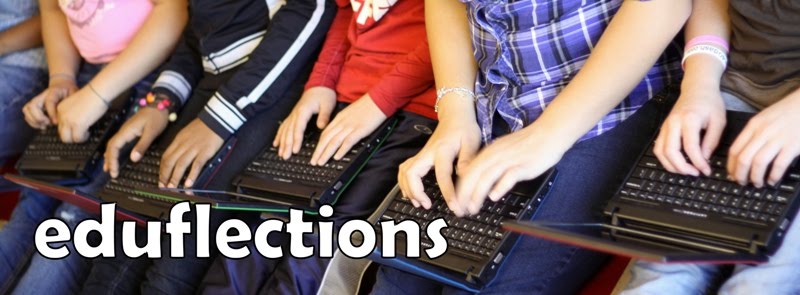So on this National Day on Writing, I would like to share our top ten favorite tools that support writing. These tools empower my writers by strengthening their voice.
- KidBlog- Those of you who have been following my blog know that my learners have latched onto blogging like a fish to water. They have become voracious writers sharing what they are learning, reading, exploring, or contemplating. Rarely is there a time when at least one of my students isn't blogging. They have found the power of personal reflection and love the aspect that what they write has an audience who will continue their conversations and challenge one another's thinking.
- Voice Thread- This is a truly collaborative tool that allows participants to make comments and continue conversations. Usually my writers create a piece of writing, upload it, record it and then their peers will comment upon one another's writing. Comments can be done with text, voice, video, or doodling.
- Wikispaces- Wikis are a fast and simple way for students to collaboratively publish their writing projects. It gives you the ability to not only insert text, but also insert Word documents, audio files, URLs, PowerPoints, video files, spreadsheets, and photos. And if that wasn't enough, you can also embed projects like VoiceThread, ToonDoos, Vokis, Xtranormal, Wallwishers, and Livebinders directly into a wiki.
- ToonDoo- ToonDoo is a tool that lets the writer create a comic strip. They provide a huge gallery of clip art and speech bubbles, my my creative students love drawing their own illustrations, scanning them and uploading them into their ToonDoos. You can also upload photos. If your students want to create more of a comic book page than a comic strip (like my students), you can try using ComicLife.
- PhotoStory-My learners love taking their writing and turning it into a digital story. When they finish publishing, we often have a viewing party. The tool that we turn to most often is PhotoStory.It is very intuitive to use as it walks the user through every step of the publishing process.
- Audacity- If you are looking for a tool for your learners to create an audio file or podcast, Audacity is user friendly. There are the basic functions of recording a piece of writing as well as a lot of bells and whistles which can really tap into a student's creativity.
- Lintor Publishing- I described Lintor Make-a-Book in this blog post. Because sometimes writers still want a tool that allows then to hold, carry, and physically share their books with others, my writers love using Lintor's products. They provide a variety of templates as well as book sizes so that students have the opportunity to create their own hard copy, hardcover book from start to finish.
- Twitter-In class, we have a Twitter account. Many of you may be wondering about this as a publishing tool as a user only has 140 characters. However, with Twitter, my learners have to learn about being succinct and powerful in their words choices. It has really helped them to focus on their message and the best way to get that message across to their followers. They all agree that standard English is what we use when we tweet from school...no "text speak" so that all of our audience understands what they are saying.
- StoryJumper-In this post, I wrote about a project that my writers created using StoryJumper. StoryJumper allows students to create digital storybooks which can also be purchased should someone want a copy. StoryJumper has huge selection of clipart and backgrounds, but writers also have the ability to upload their own artwork and photographs, which my learners love.
- Voki- I wrote about Vokis in this blog post.Voki allows the user to create a personalized talking avatar that can be easily embedded into wikis, blogs, profiles, and email.Voki has the option for the creator to type the text they want spoken or record their voices with their avatar.

No comments:
Post a Comment